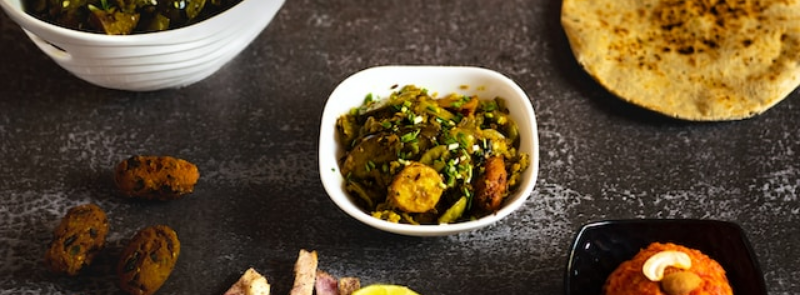
When It Occurs
Every January 14th
Timeline
Days Passed (1034)
# Hashtags
#NationalUndhiyuDay #GujaratiCulinaryTradition
On January 14th, National Undhiyu Day is observed, dedicated to celebrating Undhiyu, a distinctive mixed vegetable dish that holds a special place in the culinary tradition of the Gujarati people in India. The dish derives its name from the Gujarati word "undhu," signifying "upside down."
Undhiyu, crafted with a medley of seasonal vegetables, is a winter delicacy enjoyed, especially during Uttarayan, the kite festival, in households throughout the state. As a tradition, Gujaratis prepare Undhiyu on Makar Sankrant, contributing to the designation of January 14th as National Undhiyu Day.
What is Undhiyu?
Undhiyu is a traditional Gujarati mixed vegetable dish, known for its unique cooking method and the use of winter vegetables. The name "Undhiyu" is derived from the Gujarati word "Undhu," which means "upside down." This refers to the traditional way of cooking the dish in an earthen pot, which is placed upside down and buried in a pit with a fire underneath.
The dish is made from a variety of seasonal vegetables, including yam, potatoes, brinjal (eggplant), raw bananas, beans (particularly surti papdi), and methi (fenugreek) dumplings. It is cooked slowly with a blend of spices, herbs, and coconut, which gives it its signature rich and flavorful taste.
Cultural Significance of Undhiyu
Undhiyu is traditionally prepared during the winter months, especially around Uttarayan or Makar Sankranti, when families and communities come together to celebrate the harvest season. The winter vegetables used in Undhiyu are freshest during this time, making it an ideal dish for the season.
For Gujaratis, Undhiyu is more than just a dish; it is a symbol of celebration, community, and togetherness. It is often prepared in large quantities for family gatherings, community feasts, and religious occasions.
Traditional Preparation of Undhiyu
-
Vegetables: A variety of vegetables are used in Undhiyu, including:
- Surti papdi (flat beans)
- Yam (suran)
- Potatoes
- Raw bananas
- Eggplant (brinjal)
- Methi muthiyas (fenugreek and gram flour dumplings)
-
Spices and Seasoning: The dish is seasoned with a blend of spices, including:
- Coriander powder
- Cumin
- Garam masala
- Green chilies
- Coconut
- Sesame seeds
- Fresh coriander leaves
-
Cooking Method: Traditionally, Undhiyu is cooked slowly in an earthen pot over low heat. This slow cooking method allows the flavors of the vegetables and spices to blend together, creating a rich and hearty dish. The methi muthiyas are added towards the end, giving the dish a slightly crispy texture.
In modern times, Undhiyu is often prepared in pressure cookers or stove-top pots to save time, but the traditional method remains highly revered.
Regional Variations of Undhiyu
There are a few regional variations of Undhiyu, depending on the area of Gujarat:
- Surti Undhiyu: The most popular and widely known version, originating from Surat. It uses a variety of beans and is slightly sweeter due to the addition of sugar or jaggery.
- Kathiyawadi Undhiyu: Spicier than the Surti version, with an extra kick of heat from chilies and a heavier use of garlic.
- Matla Undhiyu: This is the most traditional form, cooked in a matla (earthen pot) and buried in hot coals or a pit fire. This method gives the dish a distinct smoky flavor.
Importance of National Undhiyu Day
The celebration of National Undhiyu Day highlights the importance of regional cuisine in India and encourages the preservation of traditional cooking methods. It is a way to honor the culinary heritage of Gujarat, as well as the spirit of togetherness that comes with sharing a meal.
On this day, many families prepare Undhiyu at home or visit Gujarati restaurants to enjoy this special dish. The day also serves as an opportunity for people from other regions to learn about and savor Undhiyu, fostering a sense of cultural exchange and appreciation for India's diverse food traditions.
How National Undhiyu Day is Celebrated
- Family Gatherings: Families come together to prepare and enjoy Undhiyu, often accompanied by puri (deep-fried Indian bread) and shrikhanda (a sweet yogurt-based dish).
- Community Feasts: In Gujarat, some communities organize large feasts where people from different families and backgrounds come together to share a meal, reinforcing the sense of unity and community spirit.
- Food Festivals: In some cities, food festivals or special events are organized, where restaurants and chefs showcase their best versions of Undhiyu, offering a variety of regional interpretations of the dish.
Conclusion
National Undhiyu Day is a celebration of Gujarat’s rich culinary heritage and the traditional winter dish, Undhiyu. It represents the cultural importance of food in bringing people together and preserving traditional cooking practices. Whether enjoyed with family, friends, or in a community setting, the dish is a symbol of warmth, abundance, and the joy of sharing.


